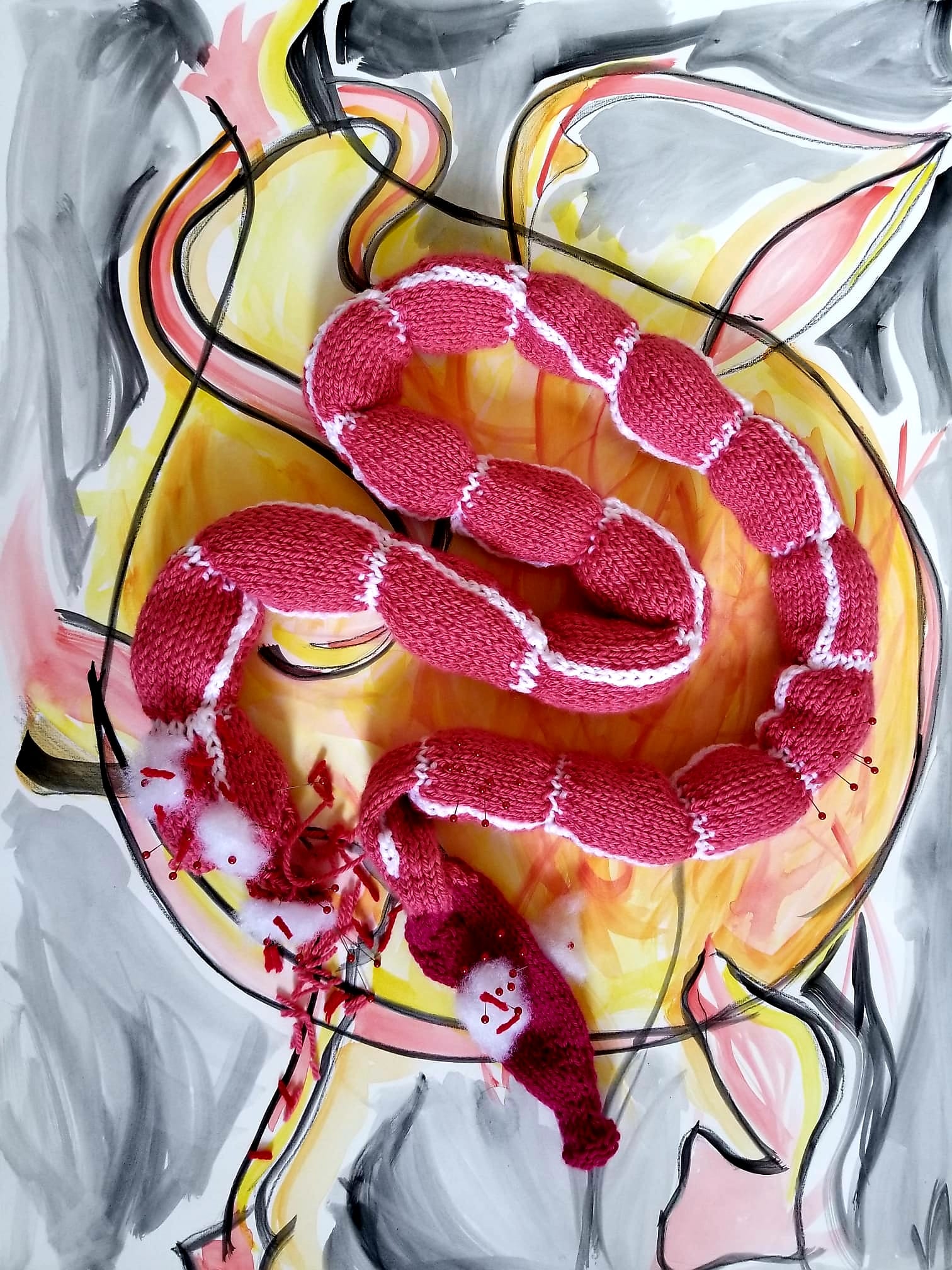89. Knitted Guts

Anji's contribution uses the Knitted Digestive System pattern by Matie Trewe, used by Guts UK, an organization seeking to raise awareness of and reduce stigma around digestive system disorders. When Anji proposed knitting the parts of my digestive system that trouble me — rectum, colon, appendix — I felt it echoed Cvetkovich's (2012) feeling that "crafting's interventions in the art world are central to the reclamation of what counts as politics to include sensory interactions with highly tactile spaces and with other people — or, in other words, feelings" (p. 177).
"Knitted Guts" renders in material, friendly form my fucked up large intestine, a long, soft tube with segments polyfilled with variable firmness, pink and cute in a way that aestheticizes my powerlessness over my abdominal adhesions and my bad feelings about my insides, producing a reparative experience of traumatic surgery and postoperative pain.
As Cvetkovich (2012) says:
The goal is to depathologize negative feelings so that they can be seen as a possible resource for political action rather than as its antithesis. This is not, however, to suggest that depression [and chronic pain and fatigue] is thereby converted into a positive experience; it retains its associations with inertia and despair, if not apathy and indifference, but these feelings, moods, and sensibilities become sites of publicity and community formation. (p. 2)
(– 103. Chronic Illness as Resistance)